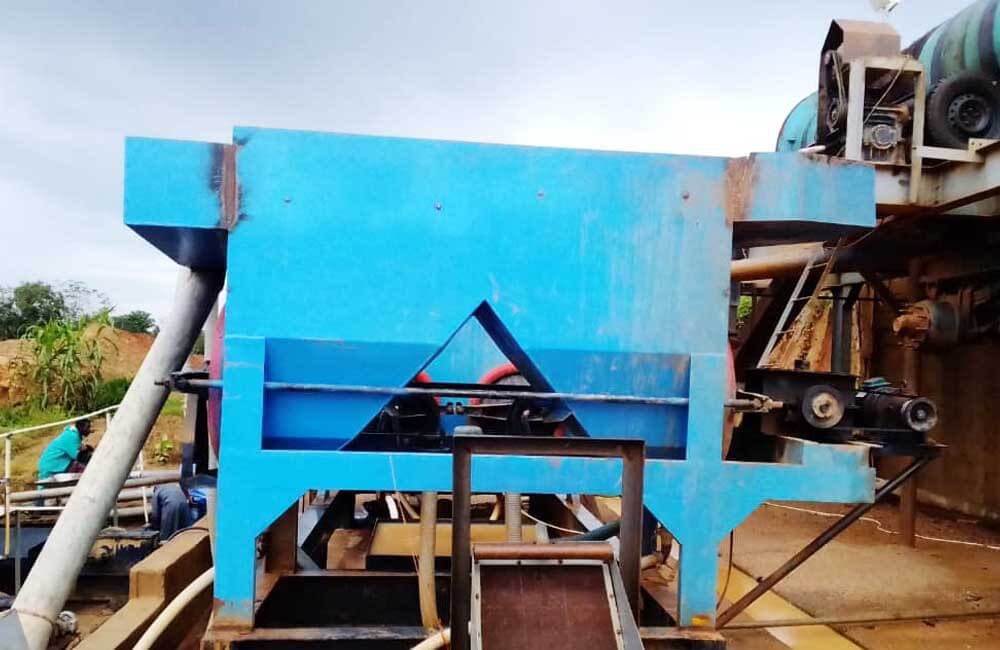What Are The Influencing Factors Of Jig Gravity Separation?

The effect of the jig gravity separation process is affected by many factors, and six common factors are listed as follows:
1. Structure Of jig separators:
The jig is mainly composed of the main parts, such as the body, transmission device, water separator, diaphragm, and valve. The structure has a greater impact on the selection index. The jig has two sections, each of which is divided into a jig chamber and a diaphragm chamber by a partition. For example, increasing the screen area of the jig chamber can increase productivity.
2. Stroke and stroke frequency
The stroke refers to the distance the jig moves in each cycle, while the stroke frequency indicates the number of cycles per minute. These two factors play an essential role in determining the size and density of the particles separated by the jig. The higher the stroke length, the more intense the movement inside the jig, resulting in better particle stratification and higher separation efficiency. On the other hand, adjusting the stroke frequency can help control the residence time of the particles inside the jig, thereby better controlling the separation process. Finding the best balance between stroke length and frequency is the key to achieving the desired results of the jig separation process. By carefully adjusting these parameters, operators can adjust their processes to achieve the highest efficiency and recovery rate.
3. Feed Ore properties
The physical and chemical properties of the ore have a significant impact on the jig gravity separation process. The density composition of the ore determines the selectivity of the material. The greater the density difference between light and heavy minerals, the higher the separation efficiency. The effective processing particle size range of gravity separation is the medium and fine particle size. Under the condition that the valuable minerals and gangue minerals can achieve monomer dissociation, the coarser the crushing particle size, the better. There is a greater choice of gravity separation equipment at this time, and better separation indicators can be obtained.
4. Underscreen water and feed water
Water is an essential medium for the jig. A higher under-screen water flow rate tends to result in a finer particle size distribution in the feed, thereby improving the separation efficiency due to better stratification and separation. On the other hand, the quality and quantity of feed water provided to the jig directly affect its effectiveness in separating valuable minerals from gangue materials. Clean and evenly distributed feed water helps maintain a stable bed density, thereby achieving better sedimentation and stratification during separation. In addition, monitoring and adjusting the under-screen water flow rate and feed water quality can optimize jig performance and maximize mineral processing plant recovery.


